Dmitry Yarmolich is a graduate of the Faculty of Physics of the Belarusian State University and holder of a doctorate in plasma physics (Technion, Israel), co-founder of the Belarusian company ITS and founder of the Plasma App startup in England. In business, Dmitry builds relationships with international partners, and in science, he works with a plasma gun that produces new materials. According to him, it is normal to be successful both in business and in science at the same time: they function according to similar laws.
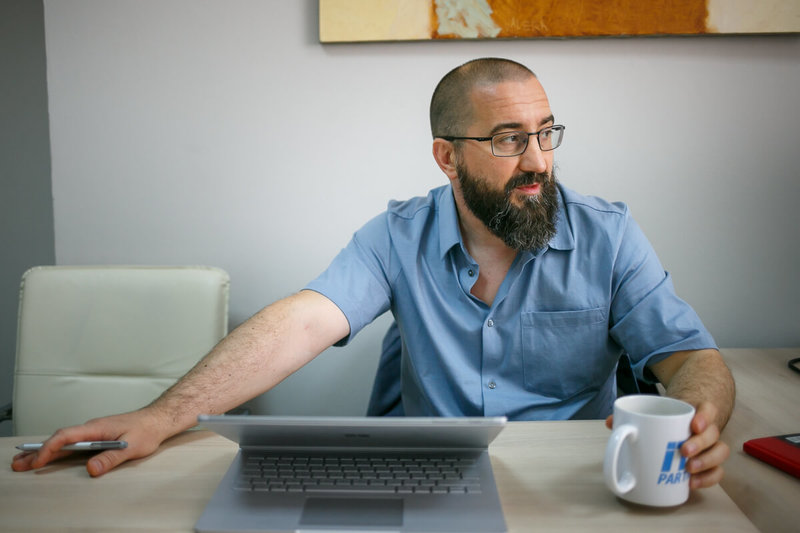
Dmitry’s fascination with plasma started when he was a student at the Belarusian State University. He started his work in the Heat and Mass Transfer Institute laboratory. It was interesting, but the idea of staying at the institute did not emerge: the were 90s, and the institution was on the brink of survival.
“The most vivid memory of the institute in those days is the atmosphere of general misunderstanding of what is happening and what will happen tomorrow,” Dmitry recalls. “Although the laboratories, despite the hard times, still worked. There were several interesting projects in our laboratory: it was possible to produce silicon microfibers for thermal insulation of space rockets, or it was possible to cut submarines with a plasmatron. Although these projects brought funding sufficient for survival, they did not allow looking into the future with optimism.”
“Israel is good, but England is better.”
In the early 2000s, Dmitry left for Israel, where he entered the Technion – Israel Institute of Technology in Haifa. There he simultaneously studied as a doctoral student and worked in a laboratory, the subject of research still was plasma, the emphasis was on the use of plasma to generate electron and ion beams.
– Everything in the Technion is well and properly organized, people there have the opportunity to do science and receive a decent salary. Of course, not the same as in high-tech, but still, a doctoral student working in a laboratory can earn 1.5-2 times more than the average in Israel.
After doctoral studies, there are two ways: to go into academic science, which implies mandatorily changing the university and country (to broaden the outlook), or to look for a job in the industry. I could have gone to the University of Illinois, but there was a generous and exciting offer from a company from Italy – to develop a solar battery without using silicon on nickel-cadmium cells to reduce the production cost. I could not refuse it.
Italy has broadened Dmitry’s knowledge of how business cultures can differ in various countries. He didn’t like the way the Italian innovation support system works.
— A large consortium of collaborators won a government grant. We signed papers, and companies and research institutes hired people (including me) and started work. The state does not pay money. The consortium has done a six-month work and reported on it. The state is satisfied, it accepts work, but does not give money, only promises it. Grantees go to the bank and take a loan under the guarantee of the state, due to which the consortium lives for another six months, then everything iterates. Finally, with big delays, the state pays the money, which is returned to the bank, but with interest. And such situations arise almost every time you face the Italian bureaucracy.
At the same time, Italy is a wonderful country with huge scientific potential and an excellent scientific school. It delighted me with its people – benevolent, intelligent, loving science and art. But it is surprising how the bureaucratic system can hold up innovation.
By that time, Dmitry already had a company in Minsk, which he opened together with a friend from the Belarusian State University. He speaks very little about its creation:
– While living in different countries, I gained experience in communication, learned to negotiate with different people, and decided to create my own company. This is how ITS emerged. I was responsible for working with customers, and Alexander Pashkovsky – for the Minsk part of the business. We systematically built relationships with partners, selected and trained personnel. Step by step, we created a working scheme of interaction between all process participants. As a result, everything started working and growth began.
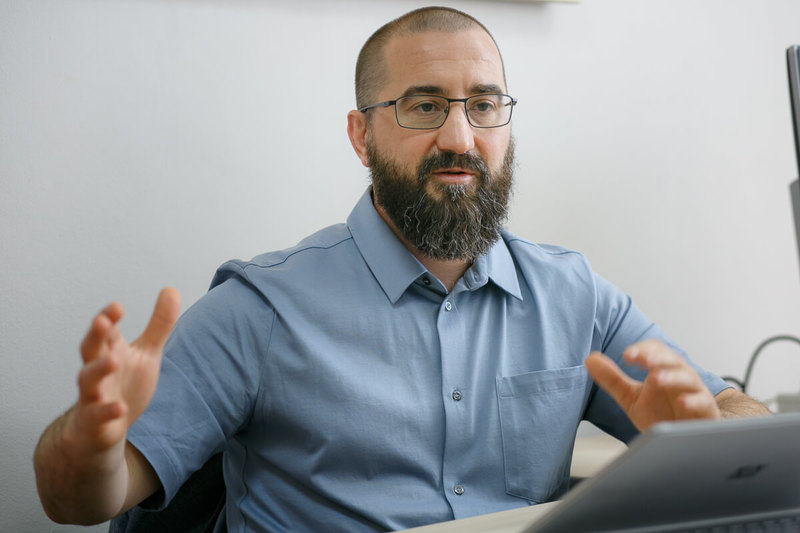
He also had more ambitious plans: to link science and business in his own company in a developed country. Therefore, in 2014, Dmitry moved to England and founded a startup called Plasma App.
— I knew there was business potential in plasma physics. When the idea of a startup emerged, I began to choose a suitable country. I considered Israel as an option. This is a very good place for business in general and a startup in particular. A startup there can even receive initial funding from the state – just like that, without obligations, you need to present your project only to one person. But there is a big nuance. When a business becomes successful and a startup is sold, it is taxed very heavily: you have to give away almost a half.
Italy was dismissed immediately: there is a terrible bureaucracy, and it is very difficult to do business in this country without connections, especially if it is related to R&D. Germany seemed too complicated to me because of the language.
However, England suited best of all. This country realized that it was lagging behind the United States in terms of innovation, and started an active state support program. There are incentives for investors and a good tax policy for startups. He applied for a patent, got an entrepreneur visa, traveled around the country – Cambridge, Oxford. It was not easy to find a suitable location for the laboratory, but in the end, he rented lab space in Rutherford Laboratories (Rutherford-Appleton Laboratory is one of Britain’s national laboratories, is located in Oxfordshire – Dev.by). It is very expensive but still good.
“I start shooting again – the alarm starts roaring again.”
Plasma is ionized gas into which any substance can go if heated sufficiently. Plasma is identified as a separate fourth state of matter because it has specific properties, for example, electrical conductivity and high propagation speed. One of the industrial applications of plasma is material deposition. All modern devices – smartphones, computers, TV displays – are made using plasma spraying.
— There are well-known deposition technologies in the world: some are the industry standard, some are purely laboratory methods, for example, pulsed electron beam deposition, which appeared in Germany back in the 70s. Everything is fine with this technology, but there is a problem: the cannon only works for a few hours. An electron beam with an energy density of hundreds of megawatts required to transform the material into plasma also destroys the source of electrons – the cathode.
All kinds of installations were created worldwide, and electron beams were fired everywhere – in Russia, Germany, Japan, and the United States. Thousands of articles have been published about the supermaterials that could be obtained using electron guns, but they still failed to bring the projects closer to the industry.
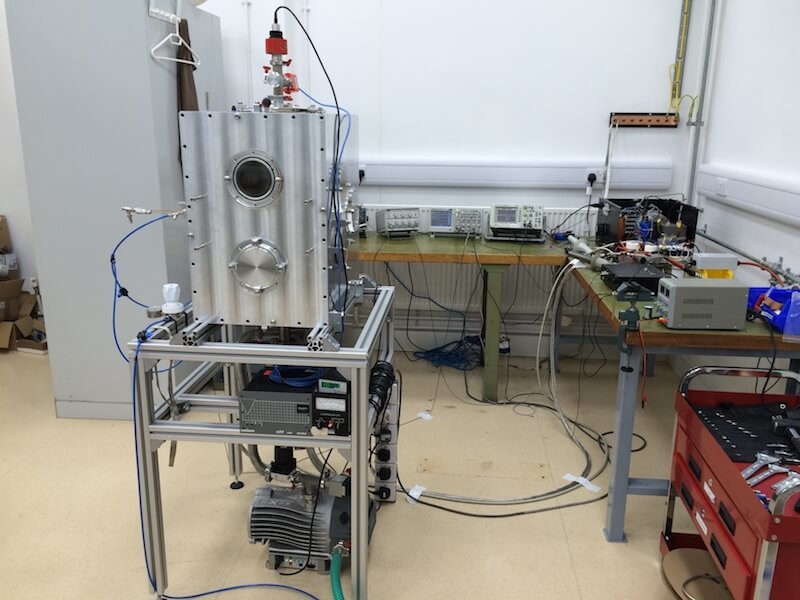
I got an idea how to make a gun that will last forever. As fantastic as it may sound, this is the content of my patent: instead of a cathode made of metal, dielectric, or other solid substances, I created a cathode of plasma.
First, I create plasma from gas, and a cathode appears in the form of ionized gas. It shoots electrons and disappears. Before each pulse, I make a new cathode, it shoots and disappears.
Dmitry assembled the first prototype of his invention alone.
— I bought tools, electrical components and parts, ordered a vacuum chamber and started assembling everything in turn. I solded a wire to the plug, a switch to the wire, a diode bridge, and so on, until I got a pulse generator. I screwed up a pump to the vacuum chamber, brought a high-voltage wire into the chamber, and screwed up a plasma gun to it. The British looked at this in surprise: A doctor of sciences is sharpening something innovative, nanotechnological on a lathe.
When everything started working, it immediately became known. The first time the cannon started firing, it triggered hydrogen sensors’ alarm in a nearby laboratory with its electromagnetic noise. The entire building was evacuated. I turned off the installation and went outside with everyone. The technicians came: they could not understand anything, deactivated the alarm, and allowed everyone to return. I started shooting again – the alarms started roaring again, everyone was evacuated again. Only then did I understand who was to blame – and I confessed. The next day, I fixed the installation and insulated the electromagnetic noise. Then the alarm would not blare, and the films would be sprayed on.
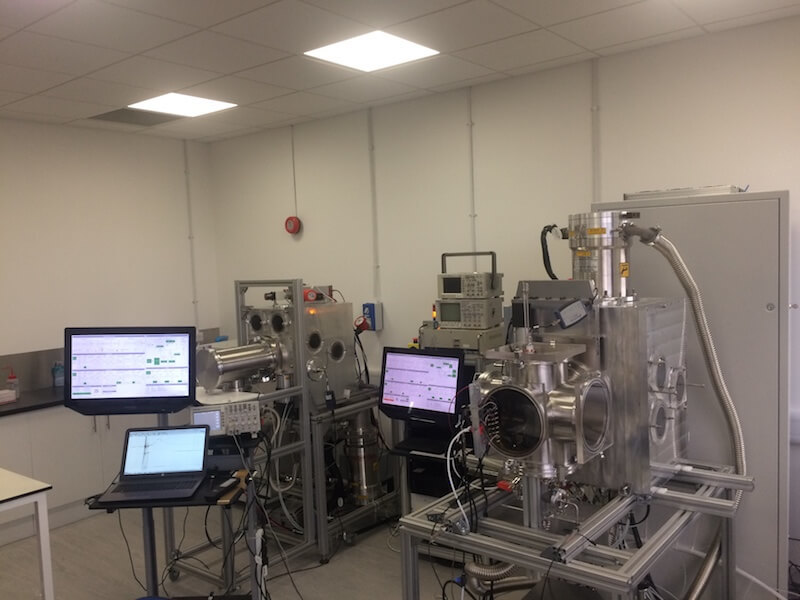

“We sprayed a diamond on a golf ball – everyone was delighted.”
Dmitry’s neighbor in the laboratory, who was trying to grow an artificial diamond using new technology, became interested in what was happening. “Can you deposit a diamond?” he asked. In industry, diamonds are known to be synthesized from graphite.
— I take graphite and deposit it – a film is obtained, a kind of diamond coating, which combines the properties of diamond and graphite: it is hard and at the same time plastic.
On the advice of a neighbor, Dmitry tried to add a business component to the experiment with a diamond – he sprayed graphite on a golf ball and got a “super business case” – diamond balls.
— It has long been known: if you have created something new, it will appear in medicine in 15-20 years, in semiconductors – in 5–6 years, and in sports goods – tomorrow. Nanotubes, for example, were first used in tennis rackets.
I deposited some golf balls, and my friend took them to a local golf club. They tried it and said: “Oh, they fly 20% farther.” Everyone was delighted. But then we sent the balls for industrial tests to California, where they were hit with an automatic machine while all flight parameters were measured – speed, range, rotation. The conclusion was: our diamond balls do not have any advantage in flight over the usual ones.
All in all, the excitement among golfers is a kind of diamond rush.
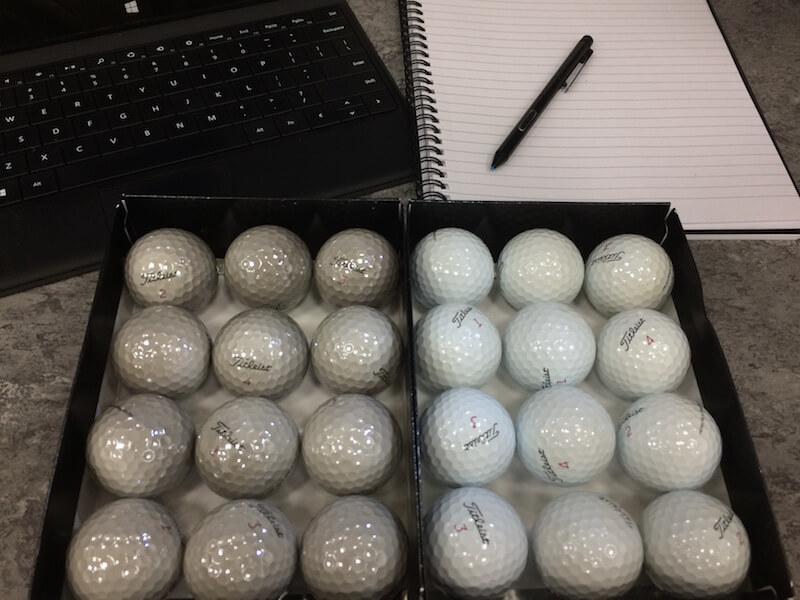
Anodes for electric cars
The main directions of the startup’s work are, of course, much more serious than improving the tennis balls. After upgrading the cannon, Plasma App won two grants from the British government for the implementation of innovative projects related to depositing new materials. One of them was implemented in collaboration with the University of Southampton, the other one – with the University of Cambridge.
Plasma App is currently working on a project for the production of batteries for electric vehicles in cooperation with the British corporation Johnson Matthey plc and the University of Cambridge.
— We are developing a technology for the production of an anode that can be integrated into the technological process for the production of batteries for electric vehicles. The new anode will increase the battery capacity, and hence the trip distance on a single charge.
Another area of work is the work on a thermoelectric generator, a device that converts heat into electrical energy. For this, the scientist is experimenting with the deposition of chalcogenides of various substances.
Chalcogenides have compounds that do not transfer heat but transfer electricity well. This is an important condition for thermoelectricity. I deposit this material, heat it up on one side, and cool it down on the other side, and it gives out electricity.
Dmitry claims that Plasma App is already a recognizable name among British scientists and innovators working with nanotechnology or rechargeable batteries.

About the similarity of people and electrons
Succeding both in science and business is a rather rare combination: it requires different, sometimes incompatible, qualities and skills from a person. Dmitry, a scientist and businessman, believes that there is no fundamental difference between working with non-living and living objects.
— In any activity, be it business or science, the main thing is to build a scheme that works. Just as I build a cannon that works, I try to build relationships in my companies.
By analogy with an electrical circuit, a person in a workflow can be modeled as a functional element. For electrons – voltage and current, for a person – motivation and performance. The product of one thing on the other is work per unit of time. This is, of course, a very approximate and evaluative model for humans, and for electrons it is not absolute either. In fact, the behavior of an electron is very complex, especially if quantum effects or high energies emerge. So is the behavior of people when emotions or money interfere.
So there is no difference for you between people and electrons?
— Of course, there is a difference between them, although both may have their own functionality. If the electrons are properly directed to the right place, they will work. It’s the same with people. Only people can differ from each other, and electrons are fundamentally identical.
Source: dev.by
Photo: dev.by and from the interviewee’s personal archive